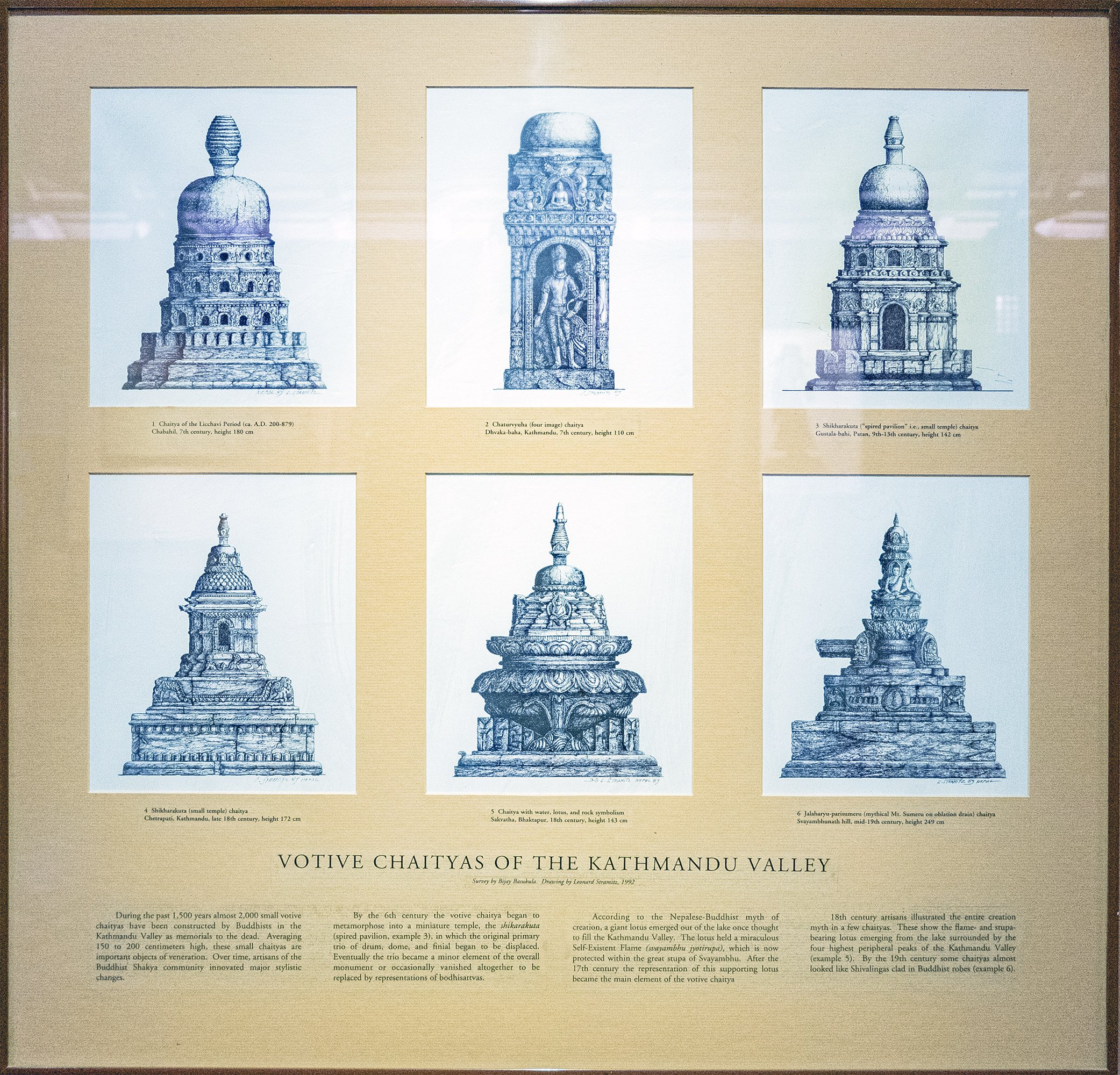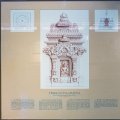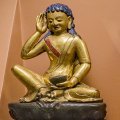Patan Museum (Nepal): photo 122
Photo 122 of 212 in Gallery: Patan Museum (Nepal)

Image title: Votive Chaityas of the Kathmandu Valley
Description of the photo
Votive Chaityas of the Kathmandu Valley [Survey by Bijay Basukula. Drawing by Leonard Stramitz, 1992]—
1. Chaitya of the Licchavi Period (ca. A.D. 200-879); Chabahil, 7th century, height 180cm.
2. Chaturvyuha (four images) chaitya; Dvaka-baha, Kathmandu, 7th century, height 110cm.
3. Shikharakuta (“spired pavilion” i.e., small temple) Chaitya; Gustala-bahi, Patam 9th-13th century, height 142cm.
4. Shikharakuta (small temple) Chaitya; Chetrapati, Kathmandu, late 18th century, height 172cm.
5. Chaitya with water, lotus, and rock symbolism; Sakvatha, Bhaktapur, 18th century, height 143cm;
6. Jalaharyu-parisumeru (mythical Mt. Sumeru on oblation drain) Chaitya; Svayambhunath hill, mid-19th century, height 249cm.
During the past 1,500 years almost 2,000 small votive chaityas have been constructed by Buddhists in the Kathmandu Valley as memorials to the dead. Averaging 150 to 200 centimeters high, these small chaityas are important objects of veneration. Over time, artisans of the Buddhist Shakya community innovated major stylistic changes.
By the 6th century the votive chaitya began to metamorphose into a miniature temple, the shikarakuta (spired pavilion, example 3), in which the original primary trio of drum, dome, and finial began to be displaced. Eventually the trio became a minor element of the overall monument or occasionally vanished altogether to be replaced by representations of Bodhisattvas.
According to the Nepalese-Buddhist myth of creation, a giant lotus emerged out of the lake once thought to fill the Kathmandu Valley. The lotus held a miraculous Self-Existent Flame (svayambhu jyotirupa), which is now protected within the great stupa of Svayambhu. After the 17th century the representation of this supporting lotus became the main element of the votive chaitya.
18th century artisans illustrated the entire creation myth in a few chaityas. These show the flame- and stupa-bearing lotus emerging from the lake surrounded by the four highest peripheral peaks of the Kathmandu Valley (example 5). By the 19th century’ some chaityas almost looked like Shivalingas clad in Buddhist robes (example 6).
Gallery information:
The Patan Museum is located on the Durbar square of Patan (Lalitpur/Lalitapura, Kathmandu, Nepal) which is associated Keshav Narayan Chowk (Keshavnarayan)—a form of Lord Vishnu. Being listed as a World Heritage Site, the whole of Durbar square is filled with exquisite temples, sculptures and other ancient structures, of which the ancient history history can be traced to the Malla Kings of Lalitpur. It is an important site for both Buddhism and Hinduism.
Photo details:
Date: 2019-12-02
Camera: SONY ILCE-6400
Exposure: 1/160
Aperture: f/3.5
ISO: 1600
Focal length: 18mm
High resolution:
Download file
Size: 2.64 MB
Resolution: 2083 x 2000
© Photograph by Gabe Hiemstra.
License: CC BY-NC-ND 4.0

